Of all the Southern Alberta sites to see, Cypress Hills Interprovincial Park is arguably the most diverse and unexpected gem. Rising dramatically from the prairie, these hills offer everything from sweeping views and forested trails to rich Indigenous history, fur trade lore, and adrenaline-pumping outdoor adventures. Whether you’re a hiker, biker, camper or history buff, Cypress Hills delivers.
Disclosure: This post contains affiliate links. If you make a purchase, we may earn a small commission at no extra cost to you. Thanks for supporting our adventures!
Table of Contents
Cypress Hills is a Southern Alberta Must-see
There are so many incredible places to explore in Southern Alberta – from the historic Crowsnest Pass in the west to Waterton Lakes National Park to Writing-on-Stone Provincial Park. But Cypress Hills holds a special distinction: it’s Canada’s first interprovincial park, straddling the Alberta–Saskatchewan border.
The park was officially established in 1989. In 2000, it expanded to formally include Fort Walsh National Historic Site. The result is a cross-border collaboration between Alberta Parks, Saskatchewan Parks, and Parks Canada – and an incredible place to explore.
Quick question: are there Cypress trees in these hills?
Quick answer: no!
The name Cypress Hills most likely came from early French-Canadian traders who described the Hills as “montagne aux cyprès“. Although for most French speakers “cyprès” refers to the cypress tree, for French Canadians the word is also used to describe the Lodgepole Pine common in the Cypress Hills.
Expect More in These Hills
Picture a cool, green plateau rising from the hot, dry prairie. That’s Cypress Hills – an ecological anomaly and a natural oasis. You’ll find forested ridges, cool lakes, and diverse wildlife, all sitting 600 metres (1968 ft) above the surrounding landscape.
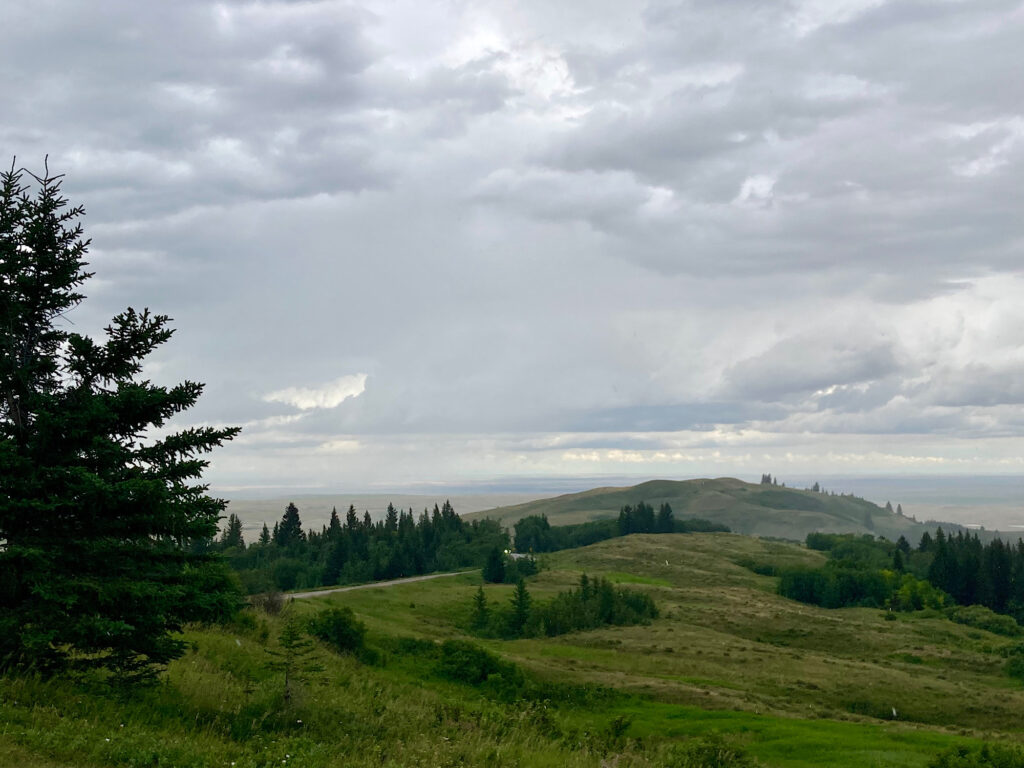
It’s a hub for:
- Camping, hiking & biking
- Canoeing, paddling & fishing
- Stargazing (it’s a designated Dark Sky Preserve!)
- Historical exploration at Fort Walsh
If you follow TimeTravelTrek – we’re actively seeking the past every chance we get! – you know this is going to be a must-stop Southern Alberta road trip for us.
Footprints in Time: Human History in Cypress Hills
People have been drawn to these hills for over 8,500 years. Archaeological digs have uncovered tools, hearths, and hunting sites from cultures like the Besant, Pelican Lake, and Oxbow. The Blackfoot called this area Kááyikimiko – which roughly translates to “Divided Hills.” The area served as a crucial wintering site for Indigenous communities due to its shelter, water, and plentiful game.
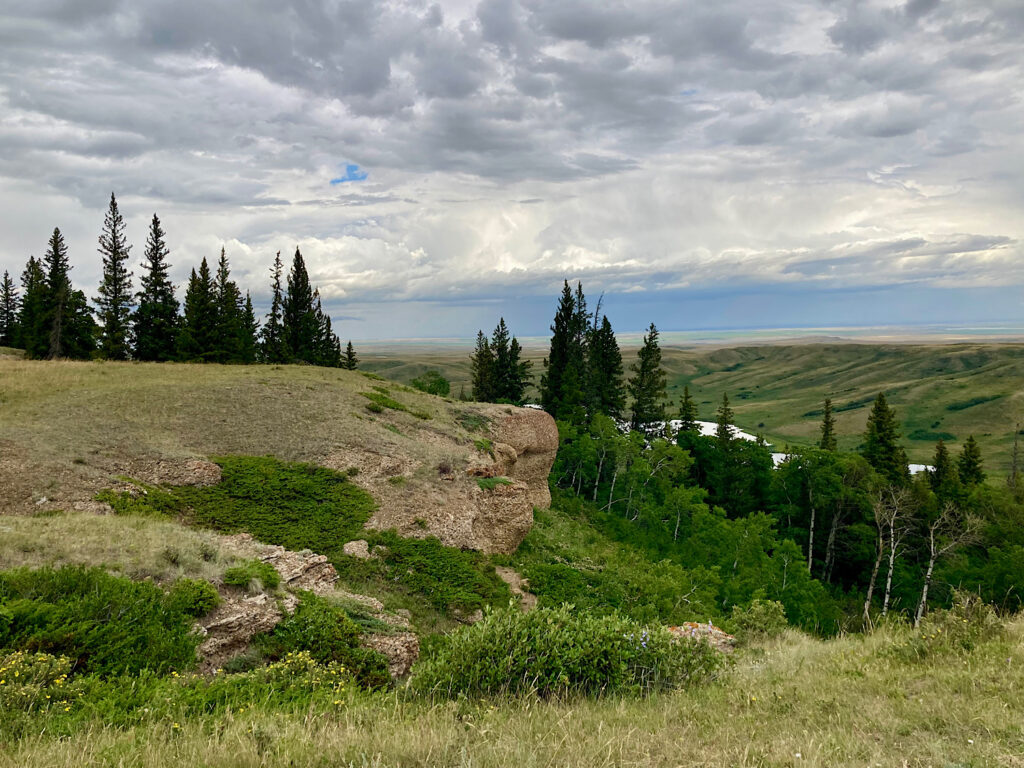
The Fur Trade & Cypress Hills Massacre
In the 1850s and ’70s, Cypress Hills became a hotspot for fur trading posts – and conflict. Traders like Abe Farwell and Moses Solomon dealt liquor for pelts, operating along Battle Creek. Tensions between these traders and local Assiniboine eventually erupted into the Cypress Hills Massacre in 1873 – a tragic event that left over 30 people dead and galvanized the Canadian government to send the Northwest Mounted Police (NWMP) westward.
Fort Walsh: Policing the Frontier
In response to the massacre, the NWMP established Fort Walsh in 1875. It became a central base for enforcing law, controlling the whisky trade, and managing Indigenous and settler interactions until 1883. Today, Fort Walsh National Historic Site offers immersive tours, interpretive programs, and glimpses into life on Canada’s frontier.
Interested in NWMP history?
Read more in our posts about Fort Macleod, Fort Whoop-up and Police Outpost Provincial Park.
Métis & Early Settlement
The Métis played a vital role here too, wintering in the hills between bison hunts. They built cabins and churches, forming tight-knit seasonal communities. As the fur trade waned, ranchers, loggers, and coal miners moved in. Sawmills popped up and the first coal mine opened in 1907. Elkwater began to grow into a recreational hub by the 1920s.
Cypress Hills: Where Preservation Meets Recreation
From early on, Cypress Hills was recognized as something worth protecting. In 1906, it was designated a Forest Reserve. By 1951 it had become Cypress Hills Provincial Park. In 2004, it earned Dark Sky Preserve status – perfect for stargazing away from city lights.
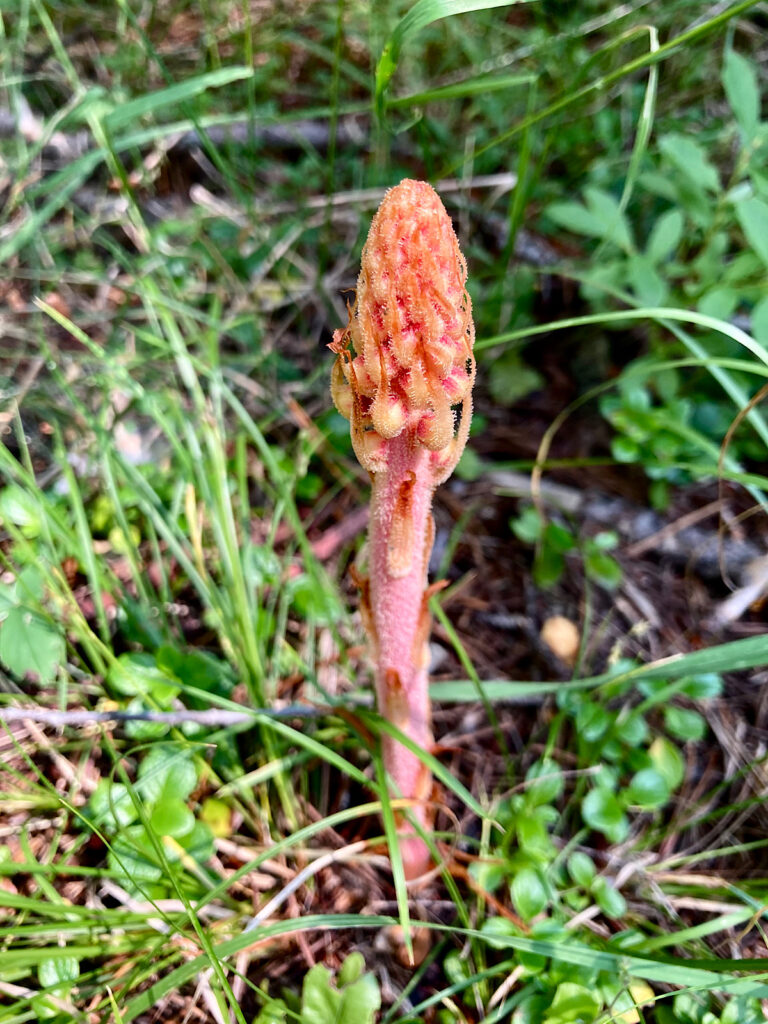
Today, it’s a paradise for picnicking, paddling, hiking and wildlife viewing – and a haven for history-lovers, too.
Camping in Cypress Hills
There are 11 campgrounds in Cypress Hills Provincial Park. The six campgrounds closest to Elkwater include:
- Firerock– close to biking trails, comfort cabins and scenic views with 65 non-serviced and 64 powered sites
- Lakeview – 13 open, RV-friendly sites with power/water hookups
- Elkwater– near the lake, visitor centre and amenities with 72 RV-friendly sites with power/water hookups
- Beaver Creek – 20 RV-friendly open sites with full power/water/sewer hookups
- Old Baldy – 19 RV-friendly, power/water hookups
- Ferguson Hill – Wooded, quieter, up a short but steep hill overlooking the lake, all sites non-serviced
We chose Ferguson Hill mainly because we didn’t need services, it looked close to the bike trails, and it was the one where we could get a reservation for our chosen dates. Although the sunsets are spectacular on the hill, next time we’ll book ahead and stay in the non-serviced loops of Firerock – it’s more convenient for lake access.
Check the Alberta Parks page for up-to-date campgrounds details and reservations.
Road-Tripping from Alberta to Saskatchewan
A scenic drive from Elkwater to Fort Walsh takes you past lakes, ridgelines, and historic ruins. Head out on Ferguson Hill Road to Murray Hill, across and down to Reesor Lake Road – keeping an eye out for pelicans, deer, and changing landscapes with scenic viewpointss. Check out the park’s scenic driving map for an overview.
Cross into Saskatchewan and take a moment to get out and see the Symons-Noble cabin ruins. There’s a story worth the potential wet foot creek crossing. Be sure to detour to the Conglomerate Cliffs – a short drive and worthwhile stop for the views.
No visit to Cypress Hills Interprovincial Park is complete without spending time at Fort Walsh. We joined a guided tour before setting out to hike the 6 km (3.7 mi) loop to the Massacre Site – a poignant trail through wildflower meadows, creeks, and ridge views.
First-Time Mountain Biking Adventures
This was our first time biking Cypress Hills – and what a ride! There are over 50 km (31 mi) of trails – with a wide variety of difficulty – to choose from. Be sure to check the trail report for updated conditions before heading out.
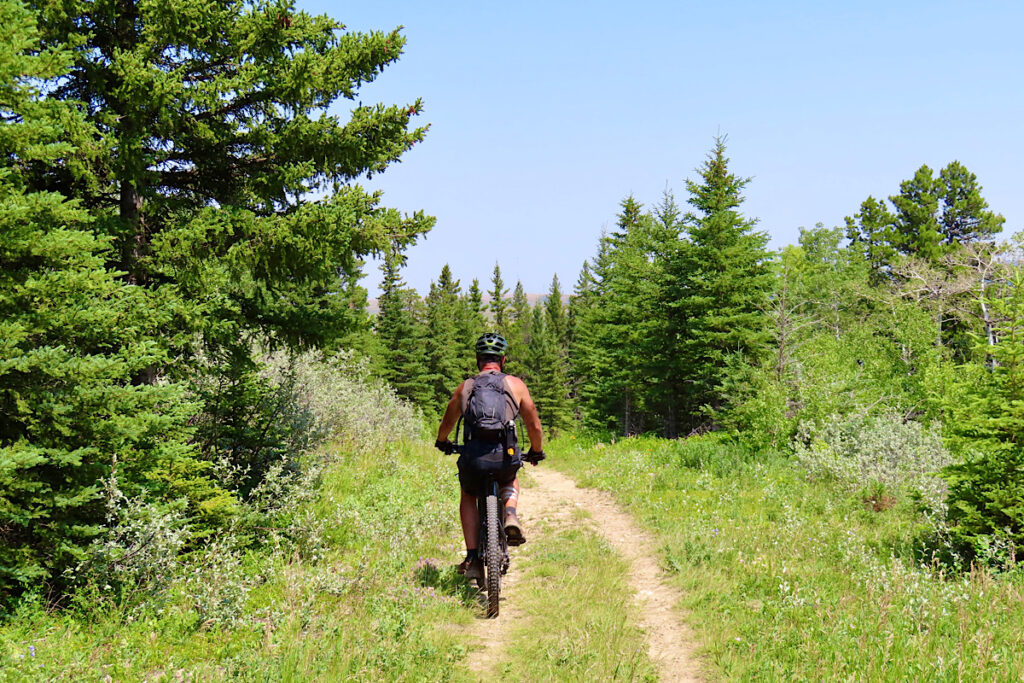
We tackled a 19.7 km (12.2 mi) loop from our campsite at Ferguson Hill which included:
- Beaver Creek Trail (rooty climb!)
- Nichol Springs
- Forestry Museum & Horseshoe Canyon Viewpoint – must-do
- Firerock & Crocus Trails
- Badger Grind – fun, flowy, and family-friendly
- Old Baldy – where the views are worth the climb
Highlights? Thousands of butterflies in “Butterfly Alley,” epic canyon views, and trails for all skill levels. We even peeked into comfort cabins near the lake – just $100/night and super cute.
Another Great Bike Loop
A shorter 12 km (7.4 mi) loop from Firerock Boat Launch takes you down Badger Grind, across Cougar Ridge, through Beaver Campground and past the ski hill. In spring, the wetlands and birdlife here would be next level.

Plan your adventures with our 2026 RV Trip Planner available in our Etsy Printables Shop!
When You Go
The park is located 20 km (12.4 mi) southeast of Medicine Hat on Highway 1 and 30 km (18.6 mi) south on Highway 41. Pick a Southern Alberta Backroad Mapbook to help extend the adventure!
No Gear? No Problem. The Visitor Centre offers rentals – everything from pedal to paddle (SUPs and canoes) power, with lessons available too.
Cypress Hills: A Southern Alberta Bucket List Stop
With its blend of natural beauty, rich history, and adventurous spirit, Cypress Hills Interprovincial Park is a standout among Southern Alberta sites to see. Whether you’re here for a weekend or a week, you’ll leave with unforgettable stories – and maybe a few muddy shoes, too.

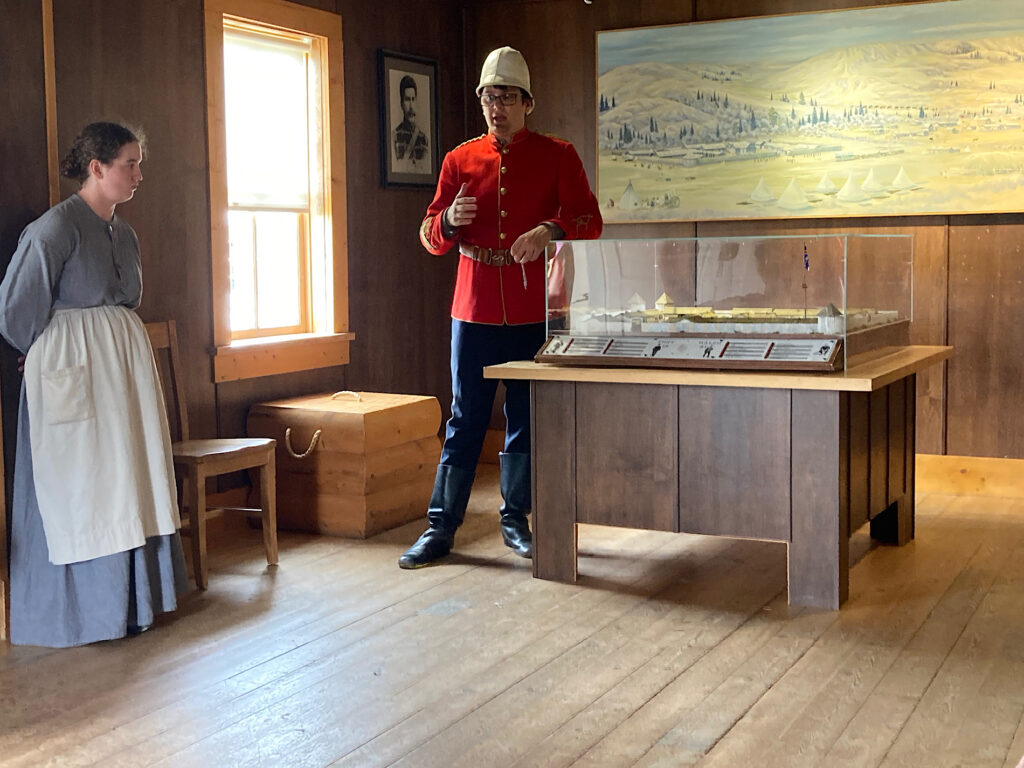
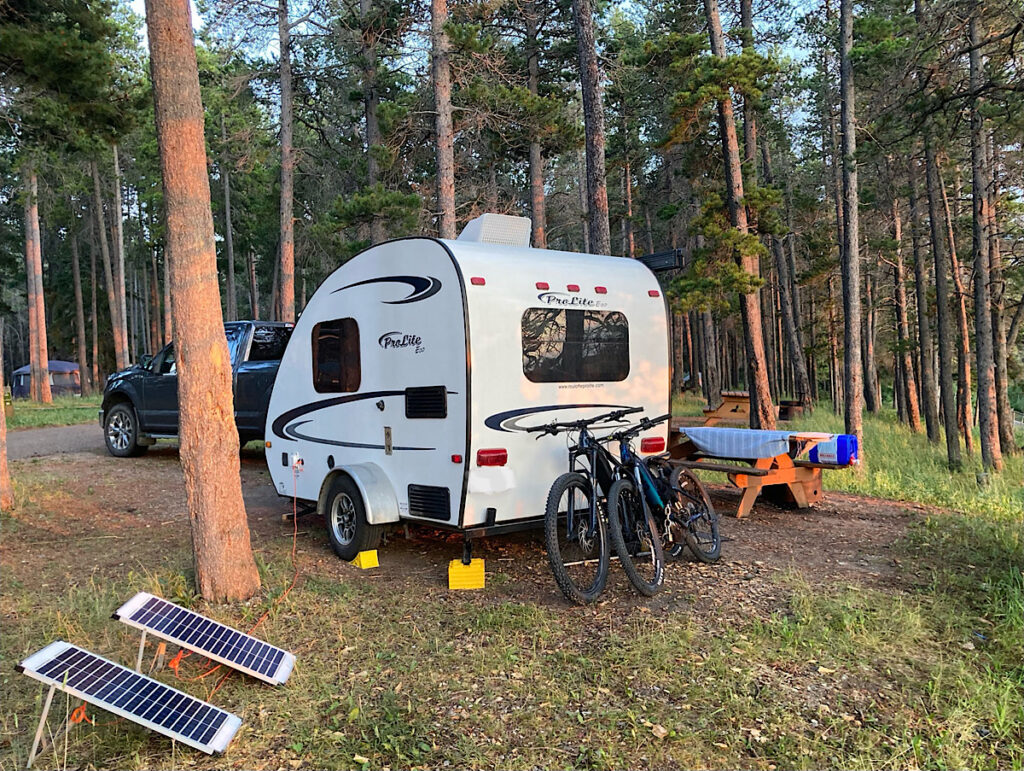

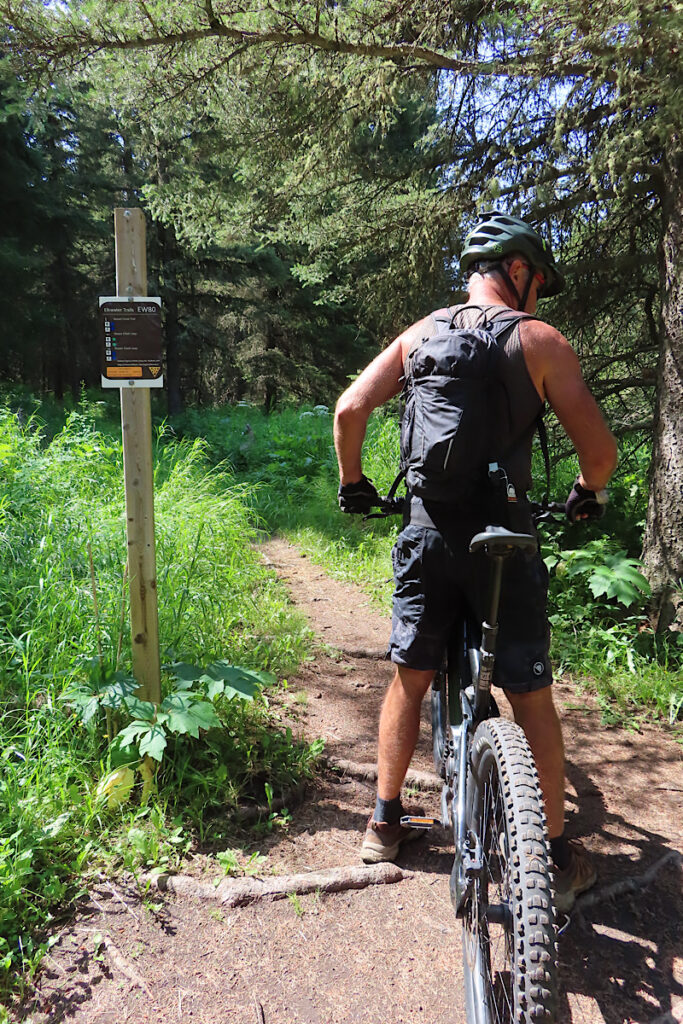
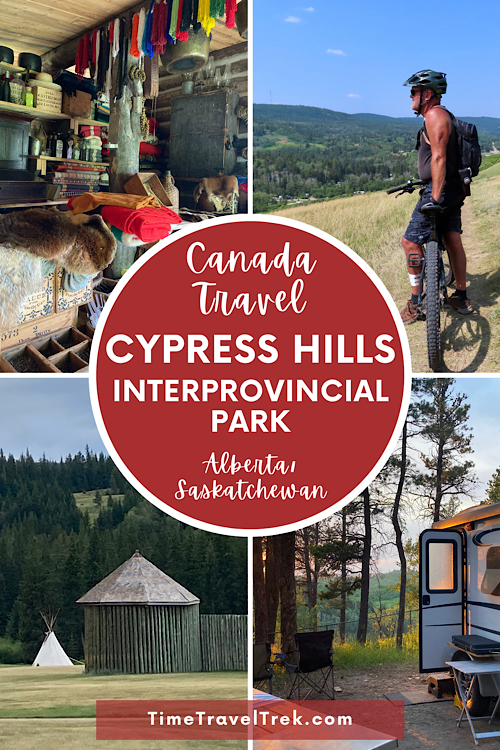
Leave a Reply